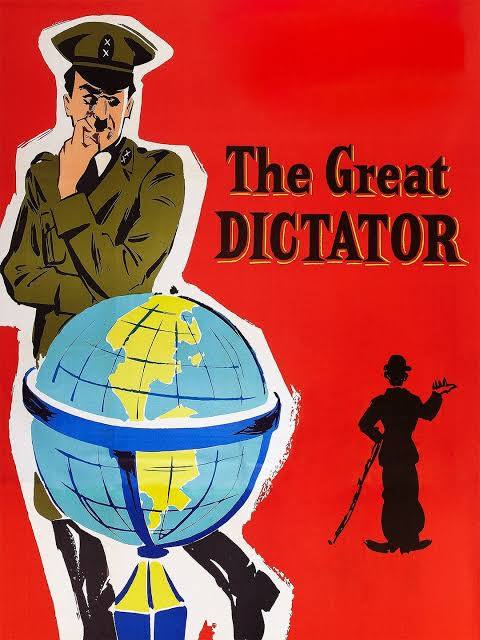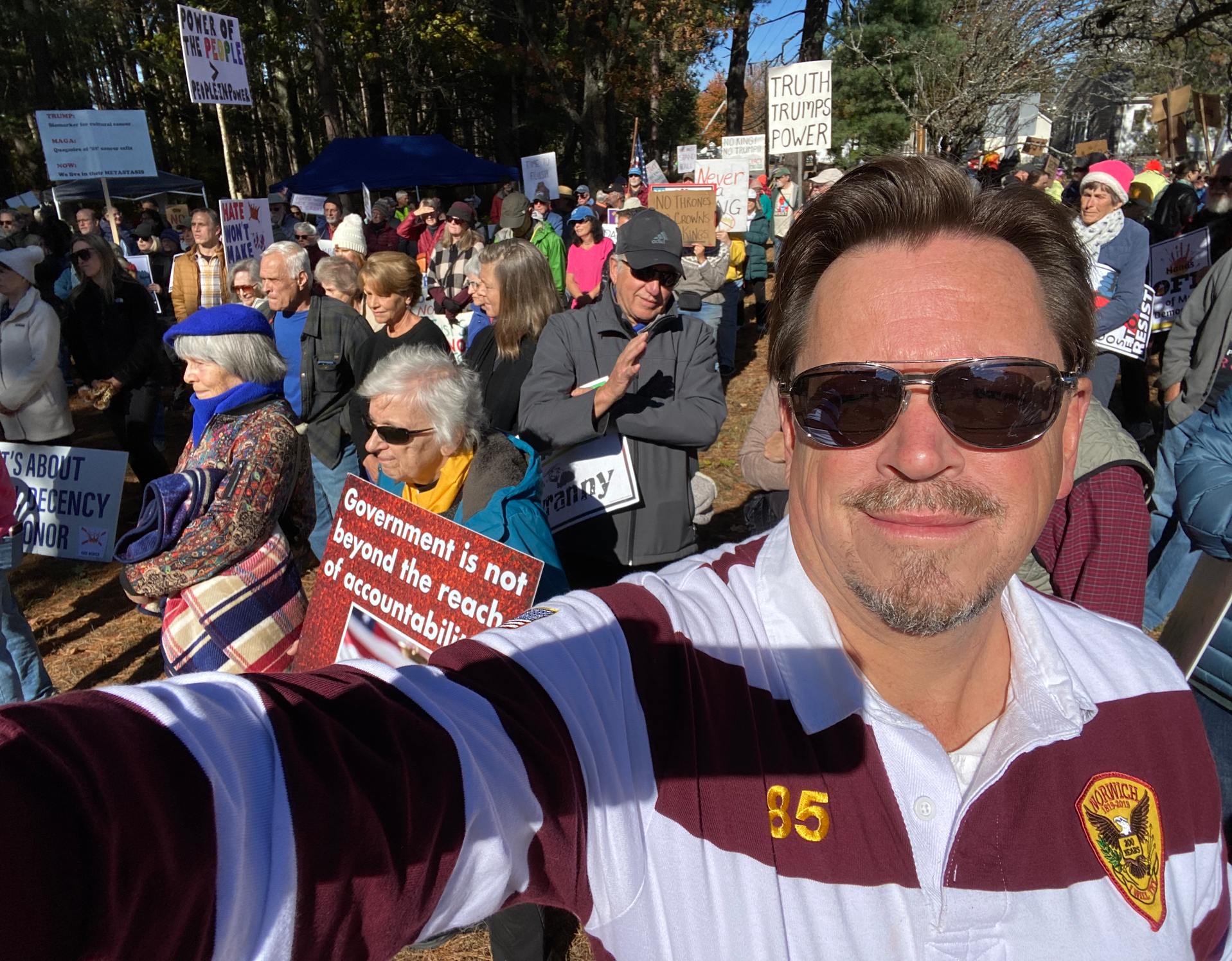The Strongman is a pathetic fool, but dangerous. How do we resist to preserve our freedom and our democracy?
Believe in the Republic Up front, I believe in the unfulfilled dream of our democratic exercise. The promise of individual dignity is a work in progress. There’s a sense of despair as we watch anti-democratic leaders, autocrats, oligarchs, and greed fueled people commandeer the Republic. We must overcome them. If we misread their intent or qualify it, we know the potential outcomes. Mostly, we must realize that the words we use and the world we see and hope for are not the ones they see or hear. What is strange to us is perfectly normal for them. We need to stop adjusting, rationalizing, and accommodating and make them. As we identify the toxic threat, we can redirect our future. As we continue to show our courage – simply not giving in – the people exploiting us will lose.
As Ken Burns’ film about the American Revolution is about to air it is important to remember our Declaration of Independence from the monarchs and now oligarchs: “We hold these truths to be self-evident, that all men are created equal, that they are endowed by their Creator with certain unalienable Rights, that among these are Life, Liberty and the pursuit of Happiness.” There is nothing self-evident about this. It is up to us to make it so.

Be Silly and Focused I’ve written before about how silliness and joy are powerful weapons against the tyrant and autocrat who cannot understand them. Even so, funny people are grounded. At the end of The Great Dictator, Charlie Chaplin, literally replacing “Hitler” speaks: “We all want to help one another. Human beings are like that. We want to live by each other’s happiness, not by each other’s misery…Our knowledge has made us cynical. Our cleverness, hard and unkind. We think too much and feel too little. More than machinery we need humanity. More than cleverness we need kindness and gentleness. Without these qualities, life will be violent and all will be lost…Do not despair. The misery that is now upon us is but the passing of greed – the bitterness of men who fear the way of human progress. The hate of men will pass, and dictators die, and the power they took from the people will return to the people…”

It Happens I’ve just described Mussolini, Hitler, Franco, Stalin, Putin, Orban, and should I go on? Each one of these men are insecure and full of fear and perhaps even self-loathing, The end result is pain and suffering.
Wanna be a lonely, pathetic “strongman”? Shout out to Ruth Ben-Ghiat’s excellent book, Strongmen: Mussolini to the Present. If you wish to submit your job application for pathetic “strongman” here’s a guide: Because you need constant adoration, you must require constant statements of loyalty from those around you who are using you for their own gain. Make sure you’re good at threatening people and have the capacity for violence. That shouldn’t be hard as you don’t like people anyway. You’ve likely committed a crime or two so make sure you seek office to gain legal protection. Don’t forget to hate, blame, and manipulate women (or girls) and humiliate the men around you while you’re at it. It’s good for your resume if you are a sexual predator. That will reinforce your definition of powerful manliness, and be a strong motive to get elected to avoid prosecution. Don’t listen or work with others because everyone else is stupid and weak. You’re not getting the job unless you have experience in mass communication so buy a few media outlets or at least get on them. They like things that are angry and shocking so be sure to build up your “manliness” by attacking the weak and vulnerable who are just trying to live their lives in peace and joy. Attacking LGBTQ+ is easiest. Bluster a lot as you plunder. Don’t forget to manipulate populist nationalism to let people know who does and does not belong. It’s better to tell people who doesn’t belong or have the right to exist. That might be trickier in America with the whole Statue of Liberty thing, so be sure to divide people by “race”, religion, ethnicity, or anything else you can come up with. People may not like it so be sure to forbid protests, comedians, our newspeople who criticize you. Oh, good trick, label everyone else “terrorists” or “enemies” of freedom. As you undermine law, order, and decency, it’s fun to use paramilitaries to act outside the law. It's just easier and the best part is that you can say you’re “for” “law and order”. It’s important you don’t laugh to yourself too much about this. Big rallies gives you the adulation you need and gives people something to do when there’s not much on TV these days anyway. Oh yes, don’t forget to pal up with other dictators who are slaughtering or imprisoning their people. People will be confused by that, but what do you care. You have money and they don’t. Create as much chaos, pain, confusion, and economic distress as possible because that’ll distract them. Oh, almost forgot because it’s hard for you to believe this, but it works. Be sure, as you victimize other people, that you constantly tell others that you are the victim. That’s a good one! Who said you didn’t have a sense of humor?
The “Strongman” as Crazy Uncle I am still guided by President Roosevelt’s, “The only thing we have to fear is fear itself” from 1933. He was offering the antidote to fascism. Hope over self-destruction. We have to be able to separate the leader from his followers. I’m not talking about those who have collaborated for self-gain and have hurt so many – that will be a matter of politics and law. But we must recognize that we humans are vulnerable. When people are traumatized or afraid they can embrace the irrational. As they attempt to get some control over their lives in moments when what they “knew” or expected from life are disappearing, we must respond with compassion not condemnation. They have embraced the “strongman” perhaps because he feeds their biases, frustration, and anger. For many, their most important “currency” isn’t financial but social. Family and friends are what makes life worth living. The “strongman” knows this and is playing the role of the crazy uncle. Sure he’s nuts, but he’s one of us and someday he might help us. If you try to use your logic and reason on them to tell them that they’re wrong, good luck! This is about their pride, sense of belonging, and sense of self-worth.
My Turn Shout out to the Portland frog! We must keep calm and not take the bait. We’re strong enough to respect ourselves and our democratic hopes. People who try to project power as “strongmen” are pathetic, but dangerous. How long do we accept their buffoonery before we say that we matter? Using non-violent demonstrations and laughing at the strong man is a good start. We must continue to limit access to guns and turn the temperature down. Arming paramilitaries and increasing violence is the tool of choice for dictators. Despite what the rumor mill says, Hitler did not take away the guns. Instead, his SA “brownshirt” thugs got their weapons from the German Army depots in a plot to create violence so that a dictator could justify a crackdown. We’ll talk about the Second Amendment later. For now, it’s good to remember that it focused on the 18th century concept and federated nation-building idea of “well-regulated militias”. We must investigate white supremacists in the military and police and declare white supremacist movements as terrorist organizations. Demand transparency and oversight. Protect any groups or people that are targeted. Follow the money. We must say enough, there is a better way. We must value and protect the media, comedians and the teachers. When it seemed that we were powerless, a nationwide protest to save Jimmy Kimmel (whether you like him or not) showed that this is up to us. We must educate ourselves about the merits of civic behavior and encourage workplace training. We do this not by focusing on the “strongmen” and giving him air to fill his balloon, but by highlighting the everyday, extraordinary person who stands up for their neighbor and themselves. We have plenty of examples to find.











